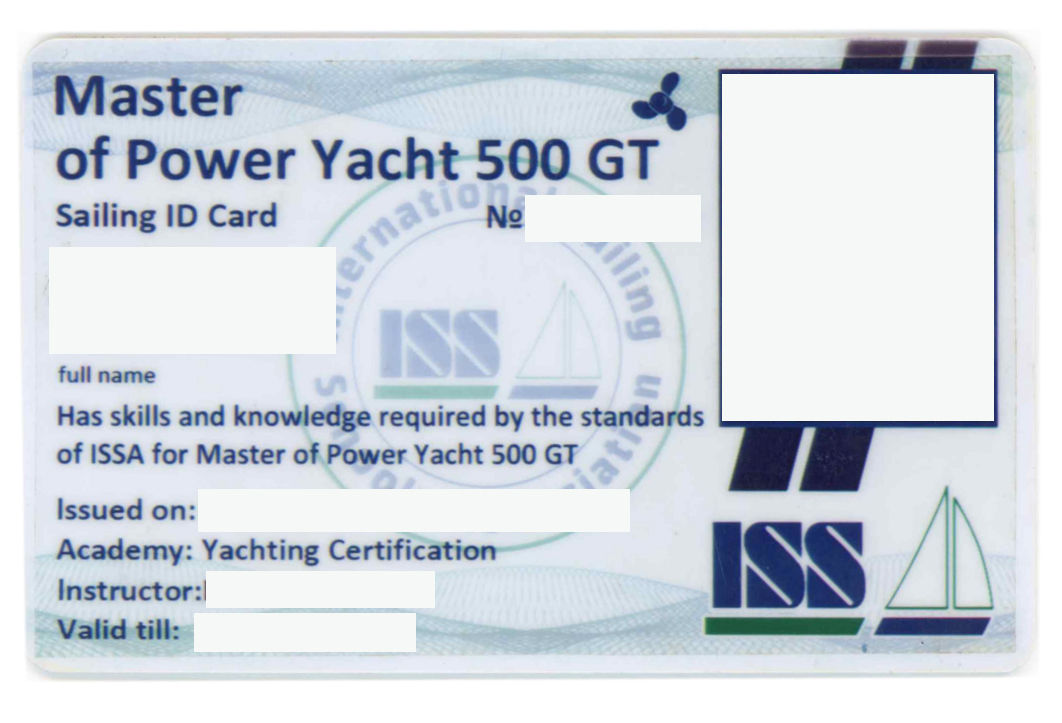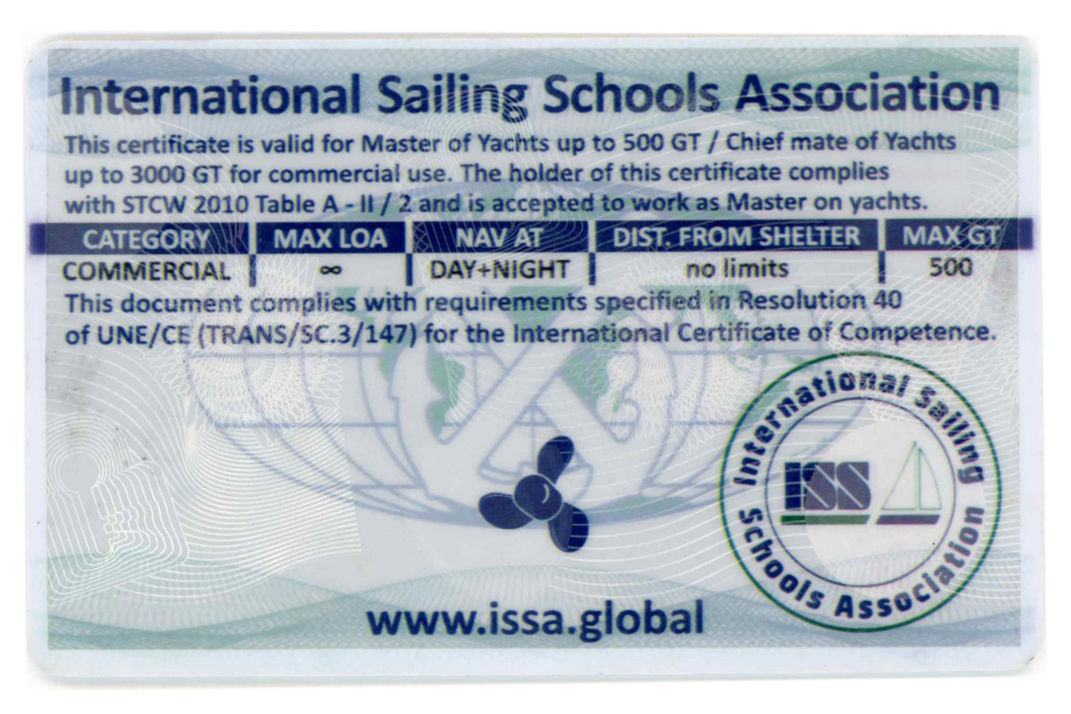



• Experience required prior training:
2000 hours at sea as a skipper in at least 10 voyages, in at least 3 different sea areas, including tidal waters (at least one area).
At least 150 hours as an officer or watch leader on a yacht of minimum weight of 300 gross tonnes.
• Certification required prior training: LRC, STCW95 (or equivalent)
• Minimum age required: 30 years old
• Suggested number of training hours: 40 hours – training covers more exam
preparation
• Training: ISSA Instructor who holds MOY 500GT certificate
• Examinator: ISSA Examiner sent by ISSA TRAINING CENTER (or as otherwise agreed)
• Examination: 24 hours, including 6 at darkness Maximum 3 candidates at a time + crew
• How to submit the application: Through an accredited school to ISSA training centre only
Candidate for Master of Yacht 500GT should possess the same knowledge as Master of Yacht 200GT but must have prior experience on yachts of at least 300 gross tonnes
documented in a log book or letter from captain or yacht owner
signed and stamped.
Apart of that, Master of Yacht 500GT should:
• have proper appearance (dressing and hygiene)
• should behave properly (show respect to others)
• be confident in his actions;
• be friendly to his crew;
• remain calm in all situations and should not escalate stressful situations;
• have good communication skills with the crew;
• posses communicative knowledge of English language;
To access the 500 GT Course, you must already have the 200 GT certification. This course represents a further step in training for those who want to manage even larger vessels, with greater responsibility in terms of crew and safety.
Differences between the 200 GT Course and the 500 GT Course:
In addition to the skills learned in the 200 GT course, the 500 GT Course focuses on additional technical and management aspects related to large vessels. Among the main areas of study:
1. International maritime laws: In-depth study of international maritime regulations, such as the IMO (International Maritime Organization) conventions, SOLAS (Safety of Life at Sea), MARPOL (Marine Pollution), and other regulations that govern the safety and protection of the marine environment.
2. Large-Hull Navigation: The course uses larger tonnage vessels, allowing participants to become familiar with the concept of headway. The term refers to the inertial motion of a vessel after the engine power has been reduced or cut off. Since larger vessels have greater mass, stopping them or changing direction requires more time and space. This requires greater ability to predict and plan maneuvers.
3. Crew Management: A captain of a large vessel must be able to manage the crew effectively. The course provides skills to develop leadership skills, management of group dynamics and conflict resolution on board. This also includes how to approach the crew in a professional manner, delegate tasks and anticipate any issues related to safety, emergencies or difficult operating conditions.
4. Foresee and anticipate possible complications: Develop the ability to recognize and prevent critical situations before they arise. This may include cargo management, route planning in adverse weather conditions, constant monitoring of facilities and effective interaction with port and maritime authorities.
This course aims to prepare future captains to manage large vessels safely and efficiently, not only at an operational level, but also in the management of human resources and on-board dynamics.
In the 500 GT Course, in addition to the theoretical and management insights, a very intense practical part will be carried out. Participants will be involved in practical exercises that involve traveling 300 nautical miles, divided between day and night navigation. This will allow students to acquire real skills in operating large vessels in variable light and visibility conditions.
Night navigation requires greater attention to electronic and radar instrumentation, interpretation of the signal lights of other vessels, and management of safety on board in conditions of poor visibility. The overall experience of the 300 nautical miles will allow participants to apply in a practical way all they have learned, ensuring a solid preparation to face real situations.